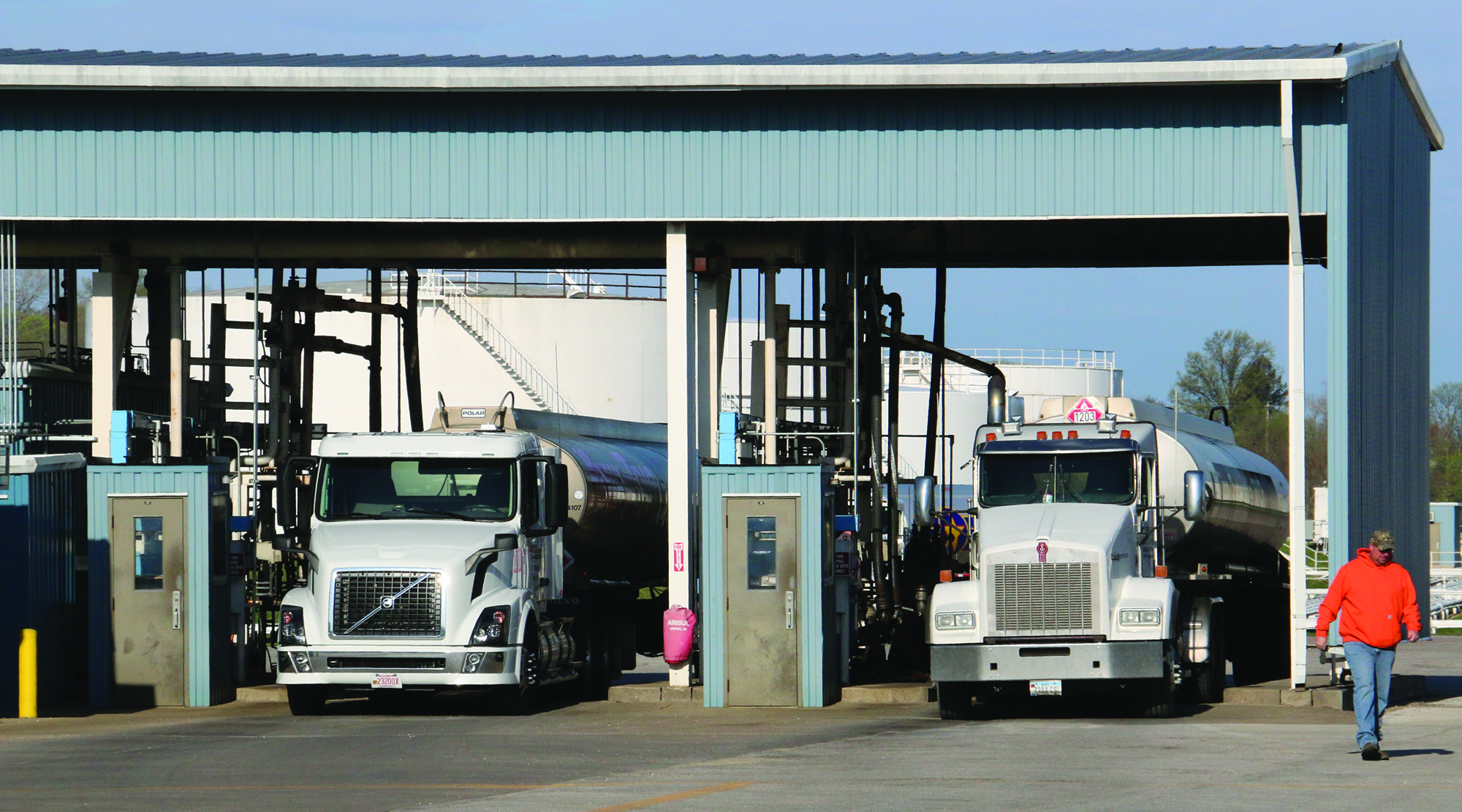
By Dave DeWitte
dave@corridorbusiness.com
Iowa’s ethanol producers have so far managed to weather a downturn in ethanol prices that have loosely paralleled the slump in oil prices, although leaner times may lie ahead.
The fortunes of several Corridor companies are linked to the ethanol industry, which has seen prices move in a general downtrend since March 2014. The futures price of ethanol on the New York Mercantile Exchange was about $1.62 per gallon on April 20, down from more than $3.20 per gallon at its peak last year.
“In 2014, we had a pretty good year,” said Monte Shaw, executive director of the Iowa Renewable Fuels Association. “Margins were good and volume was up. Now we’re holding onto the market, but the margin is razor thin.”
Iowa is the nation’s leading ethanol-producing state. It has at least 42 ethanol plants producing more than 3.8 billion gallons of ethanol per year, according to the association.
The margin Mr. Shaw referred to is known within the industry as the “grind margin.” It is the difference between the cost of feedstock such as corn, energy for processing, a chemical added to make ethanol unfit for human consumption, and the price for which ethanol and its co-products, such as distillers’ dried grains, can be sold.
The thin grind margin hasn’t shut down plants, but it could be slowing production and holding up expansion in the industry.
The weak margin was one of the factors that recently made it difficult for Fiberight LLC to complete its revamp of a shuttered ethanol plant in Blairstown to manufacture ethanol from cellulosic waste, according to company President Craig Stuart-Paul. He said lenders were reluctant to loan money for the project, due in part to the recently low margin and in part over concerns about the future of the Renewable Fuel Standard. The latter determines how much ethanol the petroleum industry must blend each year.
For the present time, Fiberight has shifted its focus to making waste cellulose into biogas. It plans to install a methane digester to produce the gas at a waste sorting facility it hopes to begin building this year in Marion.
Archer Daniels Midland (ADM), which operates one of the nation’s biggest ethanol plants in Cedar Rapids, is similarly concerned about the weak ethanol margins.
“While U.S. ethanol demand was seasonally strong because of the higher domestic response to lower gasoline prices, high industry production has built excess inventories,” ADM CEO Juan Luciano said in the company’s last quarterly earnings release. “Margins in this industry should remain challenged until supplies are better aligned with demand.”
Penford Corp., which operates a much smaller plant in Cedar Rapids and was recently acquired by Chicago-based Ingredion, cited “favorable ethanol market dynamics” in reporting higher earnings from its industrial division in the last quarter, although it didn’t address expectations for the current quarter.
Pacific Ethanol, a West Coast ethanol producer, recently told Wall Street analysts the company had scaled back production to 90 percent capacity from full capacity in the first quarter to better match supply to demand. Neil Koehler, the company’s CEO, said he sees other producers taking similar steps to reduce supply.
Although the federal Renewable Fuel Standard sets the minimum amount of fuel the petroleum industry must displace with renewable fuels, Mr. Shaw said it’s really ethanol’s role in enhancing octane inexpensively that has kept demand strong as petroleum prices have fallen.
Vehicles require gas that meets specific octane standards in order to meet engine performance requirements. U.S. refiners blend base gas at 84.5 percent octane, then blend it with 10 percent ethanol to achieve the minimum octane levels required in today’s engines – typically 87 or more, Mr. Shaw said.
Changing to petroleum-based octane enhancers would be more expensive and require time-consuming and expensive changes to gasoline processing and distribution systems, Mr. Shaw said. It would also raise the cost of gas, he added, pointing to the current difference of about 23-32 cents in the cost of straight gasoline and 10 percent ethanol blend (E10) as an indication of how much the price would likely rise.
A problem could also arise from the U.S. ethanol industry’s partial reliance on demand from what Mr. Shaw calls “unsophisticated” markets. They are a segment of the ethanol export markets that use petroleum-based additives to achieve the needed octane, and don’t really need ethanol for that purpose.
The export markets that fall into that category consume about 500 million gallons per year of U.S. ethanol.
“A 500-million gallon market might not seem to make much difference in a 14.5 billion gallon industry,” Mr. Shaw said. “It’s 3.5 percent of the market. But we don’t want to lose any market. We want to grow market.”




